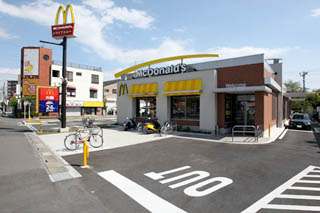Compensation awarded to occupants of building with insufficient earthquake resistance
 The Yokohama District Court has ordered that an architect office and building inspection company pay compensation of 1.4082 billion Yen (17.6 million USD) to owners of the 37 apartments in St. Regis Tsurumi after it was established that the building has insufficient earthquake resistance.
The Yokohama District Court has ordered that an architect office and building inspection company pay compensation of 1.4082 billion Yen (17.6 million USD) to owners of the 37 apartments in St. Regis Tsurumi after it was established that the building has insufficient earthquake resistance.
The building was inspected by Nippon ERI, who noticed that the building's strength did not meet standards and requested that the architect office correct the mistake. The mistake was corrected on paperwork in handwriting and ERI failed to notice the forged revision.Read more
Hulic purchases Ginza building from Recruit
 Hulic announced on January 27 that they have acquired the Recruit Ginza 7 Building from Recruit. The retail and commercial building is located at the Ginza Nishi 6 Chome crossing. The building has 9 stories and 5 basement floors and was completed in 1962. The land is 1500 sqm and the total building area is 19,790 sqm.Read more
Hulic announced on January 27 that they have acquired the Recruit Ginza 7 Building from Recruit. The retail and commercial building is located at the Ginza Nishi 6 Chome crossing. The building has 9 stories and 5 basement floors and was completed in 1962. The land is 1500 sqm and the total building area is 19,790 sqm.Read more
Kyoto Court ruling on renewal fees
The Kyoto District Court has ruled that the maximum apartment renewal fee cannot exceed 20% of the annual rent paid on the property.
On February 29th, the court made a ruling on a court case involving a 25 year old tenant who was suing her landlord for the return of her renewal fee. The judge ruled that a renewal fee that does not exceed 20% of one year's rent is appropriate, and ordered the landlord to return part of the tenant's renewal fee.Read more
LaSalle purchases expat apartments in Shinjuku, to be re-sold individually

LaSalle Investment Management have purchased an expat apartment building in Shinjuku and will be selling off the apartments individually.
Crest Court Sadohara was purchased by LaSalle's SPC in August 2011. It was previously acquired by Broad Edge Advisors in 2009 and was originally a rental-only building aimed at the high-end expat market.Read more
McDonalds to purchase retail spaces across Japan
 McDonald's Holdings Japan has embarked on a plan to purchase up the buildings that house its McDonalds stores across the country.
McDonald's Holdings Japan has embarked on a plan to purchase up the buildings that house its McDonalds stores across the country.
Currently, the majority of McDonalds stores are leased, but in the next several years the company plans to purchase the land and buildings of 200 to 300 stores.Read more
128 new apartment buildings in March
According to real estate data from Mercury, there will be a total of 128 new apartment buildings on sale in the greater Tokyo area in March 2012. The buildings will contain a total of 13,680 units, which is an increase of 39% from March 2011.
Tokyo's 23 wards will see an additional 4,570 new units, Western Tokyo will see 2,066 new units and Yokohama/Kawasaki will see 1,233 new units.Read more
Kanagawa Pref. to sell site of planned governor's residence
 Kanagawa Prefectural Governor Yuji Kuroiwa announced that the planned construction of the official governor's residence has been canceled and the land will be put up for sale.
Kanagawa Prefectural Governor Yuji Kuroiwa announced that the planned construction of the official governor's residence has been canceled and the land will be put up for sale.
In the event of a disaster, the prefecture wanted the governor to live within walking distance to the prefectural office. However, the prefecture's worsening financial conditions have forced them to cut back on some expenditures.Read more
